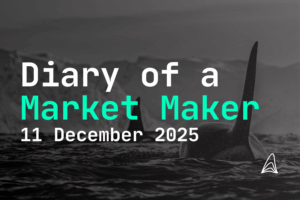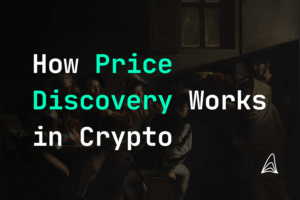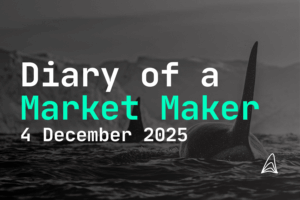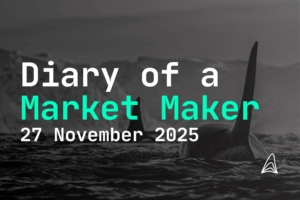Vesting and lock-up periods prevent large-scale token dumps by gradually releasing tokens to insiders. This maintains market stability and fosters long-term commitment from early investors and team members.
Defining Crypto Token Properties
- Jakob Brezigar
- Last updated: 5. September 2024
- Reading time: 4 min
In the vibrant landscape of cryptocurrencies, tokens are like digital building blocks that power various decentralized applications and economies. These tokens come in various shapes and sizes, each with distinct properties that determine their use and value. Whether you’re creating a utility token for a new platform or a governance token for a decentralized organization, defining the properties of your crypto token is the first critical step. In this guide, we’ll explore the essential aspects of token creation, from naming to distribution, while integrating key concepts like token market making and crypto exchanges.

Table of Contents
What is the importance of defining token utility?
Defining token utility is essential as it determines the token’s purpose within a blockchain ecosystem. Whether it’s for accessing services, representing ownership, or facilitating governance, a clear utility boosts the token’s value and appeal to users and investors.
Why is token distribution important?
Token distribution ensures a fair and balanced ecosystem. Proper allocation to public, community, and insiders prevents centralization, encourages participation, and supports long-term project growth.
Key Takeaways - Defining Crypto Token Properties:
- A memorable token name and defined utility are crucial for branding and project success in the crowded crypto market.
- Token supply decisions, such as fixed or adjustable, directly impact value, scarcity, and inflation control.
- Choosing the right blockchain platform affects your token’s security, functionality, and integration with exchanges.
- It is crucial to involve crypto market makers (token market makers) early on, to give you best advice and service upon token generation.
- Fair token distribution across public, community, and insiders ensures a balanced and decentralized ecosystem.
- Implementing vesting and lock-up periods maintains market stability and long-term commitment from early supporters.
Define Token Basics
Token Name
Choosing a token name might seem straightforward, but it’s a crucial decision that can influence your project’s branding and recognition. A good token name should be memorable, easy to pronounce, and ideally, reflective of its purpose or the project it supports. Names like Bitcoin (BTC) and Ethereum (ETH) have become iconic, partly because they are easy to remember and relate to their underlying technologies. However, with thousands of tokens flooding the crypto market, selecting a distinctive name that stands out can set the stage for your token’s future success. Name therefore is important property to be defined.

Token Utility and Use Cases
Tokens aren’t just digital coins; they serve various roles depending on their design and purpose. Understanding the different types of tokens and their use cases is fundamental in defining your token’s properties.
Utility Token: Utility tokens are the most common type, used to access a service or product within a blockchain ecosystem. Think of them as keys that unlock features within decentralized platforms. For instance, Filecoin (FIL) allows users to buy storage space on its decentralized network.
Security Token: Unlike utility tokens, security tokens represent ownership in an asset, similar to traditional stocks. These tokens are subject to regulatory scrutiny and are used to raise capital for projects. They offer investors a stake in the project’s success, much like shares in a company.
NFTs (Non-Fungible Tokens): NFTs are unique digital assets that represent ownership of a specific item or piece of content, such as digital art, music, or in-game items. Each NFT is distinct, making them perfect for proving ownership of rare or unique assets.
Governance Tokens: Governance tokens give holders the right to vote on decisions within a blockchain project. These tokens are crucial in decentralized autonomous organizations (DAOs), where community members influence the project’s future.
Token Supply
Defining the total supply of your token is another fundamental step. The supply can be fixed or adjustable, depending on your project’s needs. A fixed supply, like Bitcoin’s 21 million coins, can create scarcity and potentially increase value over time. On the other hand, an adjustable supply allows for flexibility but requires careful management to prevent inflation. This is one of the subsections of how to launch a new crypto token.
Choose a Blockchain Platform for Your Token
The choice of blockchain platform plays a significant role in your token’s functionality, security, and scalability. Ethereum remains the most popular platform for creating tokens due to its robust smart contract capabilities and extensive developer community. However, other platforms like Binance Smart Chain, Solana, and Polkadot offer advantages such as lower transaction fees and faster processing times.
Your platform choice can also affect your token’s integration with crypto exchanges and its appeal to market makers. Orcabay, for example, offers customized solutions tailored to different blockchain platforms, ensuring that your token is not only compatible with existing infrastructures but also optimized for liquidity and trading efficiency.
Decide How the Token Will Be Divided
Token divisibility is an essential factor, particularly for tokens intended for broad use. Like Bitcoin, most tokens are divisible into smaller units, allowing users to transact in fractions rather than whole tokens. This flexibility makes the token more accessible and easier to use across various platforms, especially for microtransactions.
Dividing tokens into smaller units can also facilitate market making on crypto exchanges. By allowing more granular pricing, you can attract more market makers who can provide liquidity at different price points, enhancing your token’s market performance.

Define Crypto Token Voting Rights
Voting rights are a cornerstone of decentralized governance, where token holders participate in decision-making processes. When designing your token, consider how voting power will be allocated. Will each token equal one vote, or will there be weighted voting where some tokens carry more influence? Governance tokens like those in MakerDAO allow holders to vote on proposals, influencing the direction of the project. Defining clear and fair voting rights can increase community engagement and ensure that your project remains aligned with the interests of its participants.
How to Establish Token Distribution and Allocation
Token Distribution
Determining how tokens are distributed is vital to ensuring a fair and balanced ecosystem. Here are the primary categories for token distribution:
Public: These tokens are sold or distributed to the public through events like Initial Coin Offerings (ICOs) or Token Generation Events (TGEs). Public distribution is crucial for building a broad base of supporters and users.
Community: Allocating tokens to the community, whether through airdrops, rewards, or incentives, helps foster loyalty and encourages active participation in the project. This can be particularly effective in building a decentralized network of users and contributors.
Insiders: Tokens reserved for project founders, team members, and early investors fall under this category. While it’s common to allocate a significant portion to insiders, it’s essential to balance this with the need for decentralization to avoid centralization of power.
Foundation: A portion of tokens is often allocated to a foundation or treasury to fund ongoing development, partnerships, and ecosystem growth. These funds ensure the project can sustain itself and adapt to future challenges.

Distribution Models
There are several models for token distribution, each with its advantages and drawbacks:
Linear Distribution: In this model, tokens are distributed steadily over time, reducing the risk of sudden market dumps and price volatility. This method is often used for insider allocations to ensure that early supporters remain committed to the project’s long-term success.
Cliff and Vesting: This model delays the release of tokens to insiders until after a certain period (the “cliff”) and then gradually releases them (vesting) over time. This ensures that team members and early investors have a vested interest in the project’s ongoing success.
Orcabay’s approach to token distribution is particularly effective, as it includes daily monitoring and strategy adjustments based on real-time trading activities. This proactive management helps optimize token allocation and maximize profitability.
Setting Token Vesting and Lock-up Periods
Vesting and lock-up periods are mechanisms used to prevent token dumps, where large amounts of tokens are sold off rapidly, causing a significant drop in price. Vesting schedules distribute tokens gradually to insiders, while lock-up periods restrict the sale of tokens for a certain timeframe. These mechanisms are essential in maintaining market stability and ensuring long-term commitment from early supporters.
Orcabay offers specialized profit and principal protection mechanisms that can be integrated into your token’s vesting and lock-up strategies, shielding your project from market manipulation by bots and other traders.
Disclaimer: The information provided in this article is for informational purposes only and does not constitute financial, investment, or other professional advice. All opinions expressed herein are solely those of the author and do not represent the views or opinions of any entity with which the author may be associated. Investing in financial markets involves risk, including the potential loss of principal. Readers should perform their own research and consult with a licensed financial advisor before making any investment decisions. Past performance is not indicative of future results.

Jakob Brezigar
Jakob, an experienced specialist in the field of cryptocurrency market making, boasts an extensive international presence. With Orcabay, he has skillfully managed major operations and deals for a wide array of global stakeholders.




